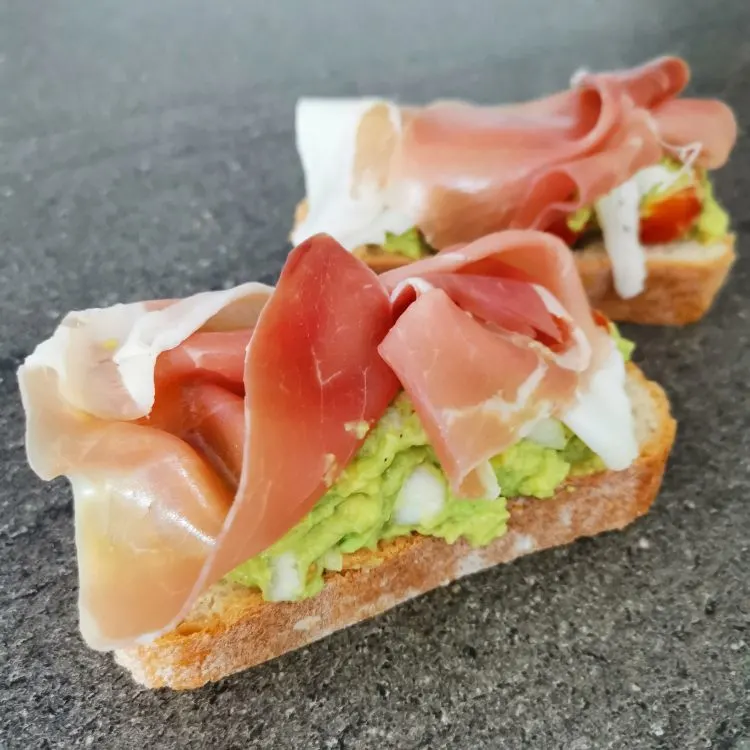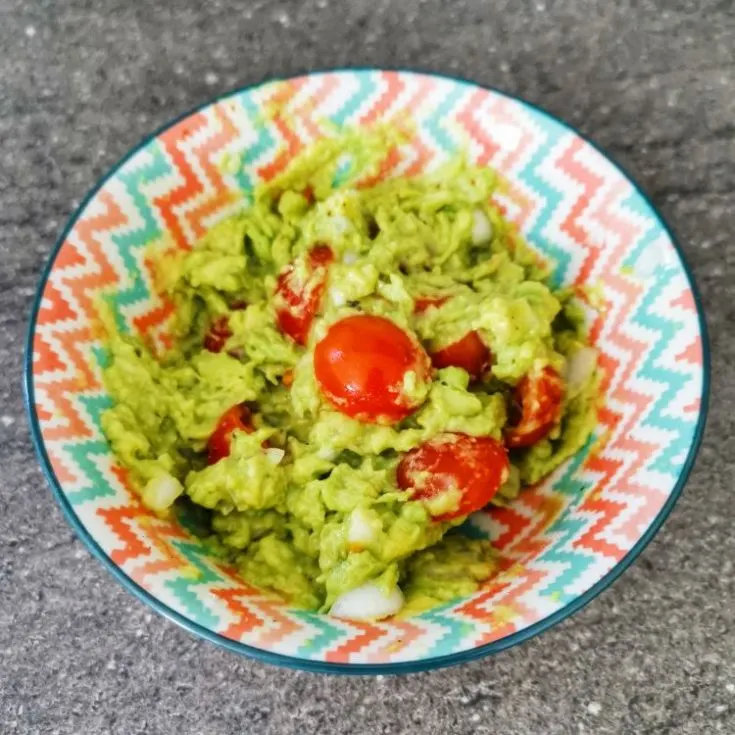Looking for an easy guacamole recipe? Look no further! Let me show you how to make guacamole in the comfort of your own kitchen.
Guacamole is a delicious and versatile dip that has gained immense popularity worldwide.
Made primarily from avocados, guacamole offers a creamy and tangy flavor that pairs perfectly with various dishes.
In this article, we will delve into the world of guacamole, exploring its origins, ingredients, health benefits, preparation techniques, and much more.
So grab your tortilla chips and get ready to discover the wonders of guacamole!
Guacamole traces its roots back to ancient Mesoamerican civilizations, particularly the Aztecs who inhabited the region that is now modern-day Mexico.
The word “guacamole” is derived from the Nahuatl (Aztec language) word “āhuacamolli,” which translates to “avocado sauce.”
The Aztecs considered avocados a symbol of fertility and believed that guacamole possessed aphrodisiac properties.
Importance of Avocados in Guacamole
Avocados form the heart and soul of guacamole. Their rich, buttery texture and subtle nutty flavor provide the foundation for this beloved dip.
Avocados are delicious and packed with essential nutrients, making guacamole a wholesome and nutritious choice.
Guacamole Ingredients
You will need a handful of fresh and flavorful ingredients to make a perfect bowl of guacamole. Let’s take a look at the key components that make guacamole so delightful.
Avocados
Avocados are the star ingredient of guacamole, contributing to its creamy and luscious texture. When selecting avocados, choose ones that are slightly soft to the touch but not mushy.
Hass avocados, with their dark and bumpy skin, are the most commonly used variety for guacamole.
- How to choose ripe avocados: Gently squeeze the avocado; if it yields to gentle pressure, it is ripe and ready to use.
- Different avocado varieties: Besides Hass avocados, other varieties like Fuerte and Reed can also be used in guacamole, each offering a unique taste and texture.
Tomatoes, Onions, Cilantro, Lime Juice, Garlic, and Seasonings
In addition to avocados, guacamole requires a medley of other flavorful ingredients:
- Tomatoes add a burst of freshness and acidity to balance the richness of avocados.
- Onions provide a sharp and pungent note, complementing the creaminess of the dip.
- Cilantro brings a vibrant herbaceous flavor that enhances the overall taste.
- Lime juice lends a tangy and citrusy zing, preventing the avocados from oxidizing and turning brown.
- Garlic adds depth and a subtle kick to the guacamole.
- Seasonings such as salt, pepper, and cumin elevate the flavor profile.
Preparation and Serving
Step-by-Step Guide to Making Guacamole
Making guacamole is a simple and enjoyable process. Here’s a step-by-step guide to help you create a delicious batch of guacamole:
- Cut the avocados in half, remove the pit, and scoop out the flesh into a bowl.
- Mash the avocado with a fork or a potato masher until you achieve your desired consistency. Some prefer chunky guacamole, while others prefer it smooth.
- Add the diced tomatoes, finely chopped onions, minced garlic, and freshly squeezed lime juice to the bowl.
- Sprinkle in the chopped cilantro, along with the seasonings of your choice.
- Gently fold all the ingredients together until well combined.
- Taste the guacamole and adjust the seasoning as per your preference.
- Transfer the guacamole to a serving bowl, garnish with additional cilantro if desired, and serve immediately.
Different Variations and Additions
Guacamole is highly customizable, allowing for various variations and additions. Here are a few ideas to elevate your guacamole experience:
- Add diced jalapenos or serrano peppers for a spicy kick.
- Mix in diced mangoes or pineapples to create a fruity twist.
- Incorporate roasted corn kernels or black beans for added texture and flavor.
Serving Suggestions
Guacamole is incredibly versatile and pairs well with numerous dishes. Some popular serving suggestions include:
- Tortilla chips: The classic combination that never fails.
- Tacos: Spread a generous layer of guacamole on your favorite tacos for an extra burst of flavor.
- Nachos: Load up your nachos with guacamole, cheese, salsa, and other toppings for a delectable snack.
- Burgers and sandwiches: Use guacamole as a condiment to elevate the taste of your burgers and sandwiches.
- Salads and wraps: Use guacamole as a dressing or spread for salads and wraps.
Health Benefits of Guacamole
Guacamole not only satisfies your taste buds but also offers several health benefits. Let’s explore why guacamole is delicious and good for you.
Nutritional Value of Avocados
Avocados are a nutritional powerhouse packed with essential vitamins, minerals, and healthy fats.
They are an excellent source of dietary fiber, potassium, vitamin K, vitamin E, and folate. Avocados also contain beneficial plant compounds like antioxidants, which help protect the body against oxidative stress.
Rich in Healthy Fats
Avocados are known for their high content of monounsaturated fats, particularly oleic acid.
These healthy fats have been associated with various health benefits, including improved heart health, reduced inflammation, and better absorption of fat-soluble nutrients.
High in Vitamins and Minerals
Guacamole provides a wide range of essential vitamins and minerals for overall well-being. Avocados are particularly rich in vitamin C, vitamin B6, vitamin A, vitamin E, and potassium.
Tips for Perfect Guacamole
To ensure that your guacamole turns out perfect every time, consider the following tips:
Preventing Guacamole from Browning
Guacamole tends to oxidize and turn brown when exposed to air. To prevent this, try the following techniques:
- Press plastic wraps directly onto the surface of the guacamole to create a barrier against air.
- Squeeze some additional lime juice over the guacamole before covering it.
- Store the guacamole in an airtight container in the refrigerator.
Storing Guacamole Properly
If you have leftover guacamole, store it properly to maintain its freshness:
- Transfer the guacamole to an airtight container, making sure to remove any excess air.
- Place the container in the refrigerator and consume the guacamole within two to three days.
- Give the guacamole a gentle stir before serving to restore its texture and flavor.
Guacamole Variations
Guacamole is a versatile dip that can be customized to suit different preferences and cuisines. Here are a few popular variations of guacamole:
Chunky vs. Smooth Guacamole
Some people enjoy chunky guacamole with visible avocado pieces, while others prefer a smooth and creamy consistency. Adjust the mashing technique to achieve your desired texture.
Spicy Guacamole
If you crave heat and spice, add diced jalapenos, serrano peppers, or a dash of hot sauce to your guacamole. Adjust the level of spiciness according to your taste preferences.
Fruit-Infused Guacamole
For a refreshing twist, experiment with fruit-infused guacamole. Diced mangoes, pineapples, or pomegranate seeds can add a delightful sweetness and vibrant colors to your guacamole.
Guacamole in Different Cuisines
While guacamole is strongly associated with Mexican cuisine, it has also found its way into various international dishes and culinary traditions. Let’s explore how guacamole is used in different cuisines:
Traditional Mexican Guacamole
In Mexican cuisine, guacamole is a staple and is often served as a condiment or dip alongside dishes like tacos, enchiladas, and quesadillas.
It is typically made with simple ingredients like avocados, tomatoes, onions, lime juice, and cilantro.
Tex-Mex Guacamole
Tex-Mex cuisine, a fusion of Mexican and American flavors, has embraced guacamole as a beloved component.
For added richness and complexity, tex-Mex guacamole often includes additional ingredients such as sour cream, mayonnaise, or even bacon.
Global Variations of Guacamole
As guacamole gained popularity worldwide, it has been adapted and integrated into various international cuisines.
For example, Japanese-style guacamole incorporates soy sauce, sesame oil, and wasabi, infusing it with Asian flavors.
Guacamole is often combined with chopped prawns or shrimp in Australia for a unique twist.

How to make guacamole not go brown
Oxidation makes your guacamole turn brown almost instantly.
If you follow the classic recipe, the addition of lime juice will help slow down the process and will aid in keeping your guacamole green.
A sure way to help your guacamole not turn brown is by storing it in a tight-lid container, and then before covering it, you need to place a plastic food wrap on top.
Pat the wrap neatly so that it covers and sticks to the guacamole entirely. After that, place the lid back and store it in the fridge.
Easy Guacamole Recipe

Ingredients
- 2 medium avocados
- 1/2 green onion
- 1 lemon, juiced
- Around 10 cherry tomatoes
- Extra virgin olive oil
- Pepper
- Salt
Instructions
- Cut the avocados lengthwise, remove the pit, and use a spoon to scoop out the flesh into a bowl.
- Add around one tablespoon of extra virgin olive oil and lime juice.
- Cut around 1/2 green onion in small pieces and add them to the bowl.
- Mash the avocado with a fork.
- Cut the cherry tomatoes in half or quarters and add them to the bowl.
- Add Pepper and Salt.
- Mash everything with a fork.
- Enjoy your homemade, easy Guacamole.
Nutrition Information:
Yield:
2Serving Size:
1Amount Per Serving: Calories: 406Total Fat: 37gSaturated Fat: 5gTrans Fat: 0gUnsaturated Fat: 29gCholesterol: 0mgSodium: 310mgCarbohydrates: 23gFiber: 15gSugar: 4gProtein: 5g
The nutritional information provided is approximate and can vary depending on several factors, so is not guaranteed to be accurate.
Frequently Asked Questions
How did guacamole originate?
Guacamole traces its roots back to ancient Mesoamerican civilizations, particularly the Aztecs, who inhabited the now-modern Mexico region.
What does the word “guacamole” mean?
The word “guacamole” is derived from the Nahuatl (Aztec language) word “āhuacamolli,” which translates to “avocado sauce.”
What are the key ingredients of guacamole?
The key ingredients of guacamole include avocados, tomatoes, onions, cilantro, lime juice, garlic, and seasonings such as salt and pepper.
What are some variations and additions to guacamole?
Guacamole can be customized in various ways. Some popular variations and additions include adding diced jalapenos or serrano peppers for spiciness, incorporating diced mangoes or pineapples for a fruity twist, and including roasted corn kernels or black beans for added texture and flavor.
